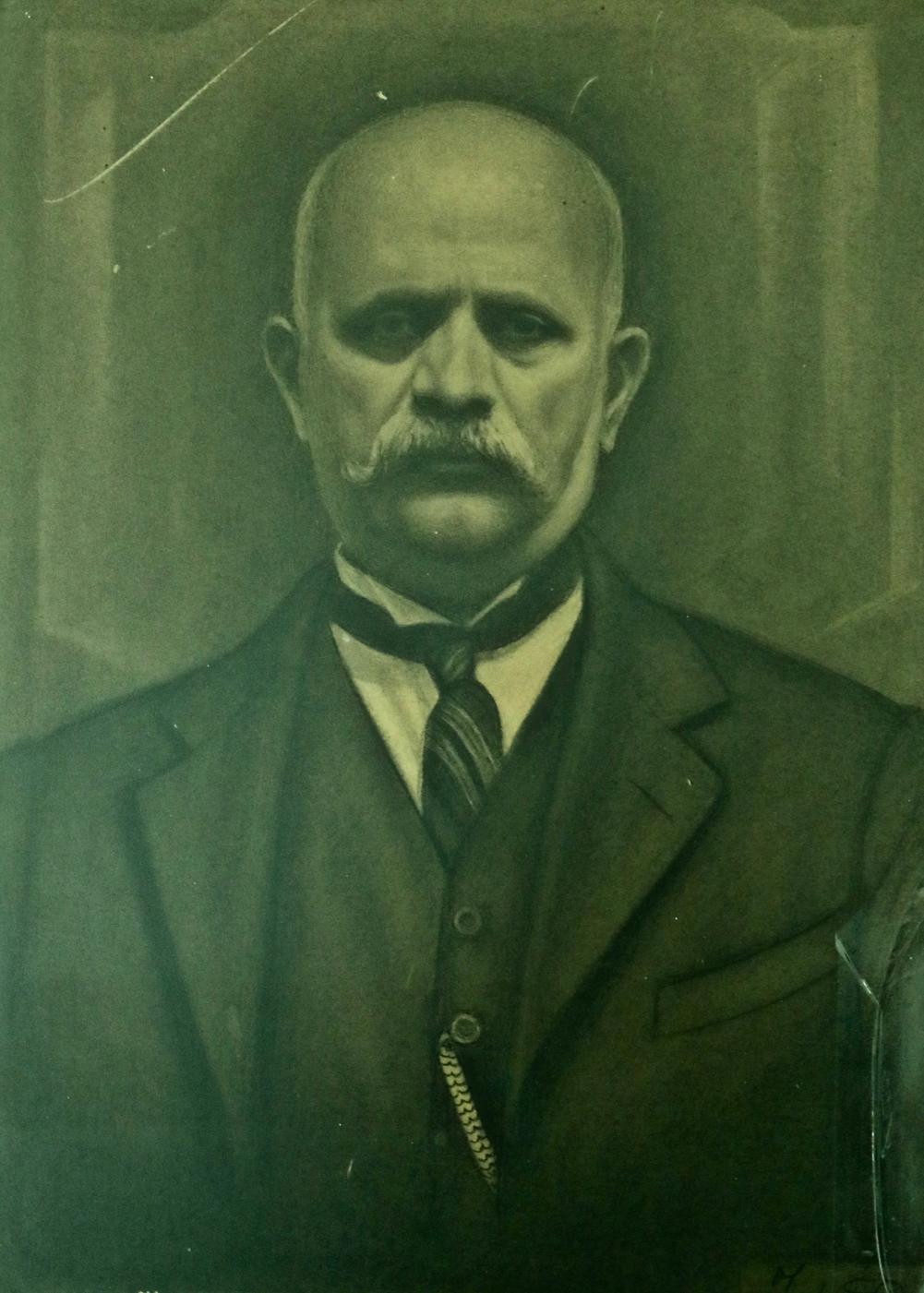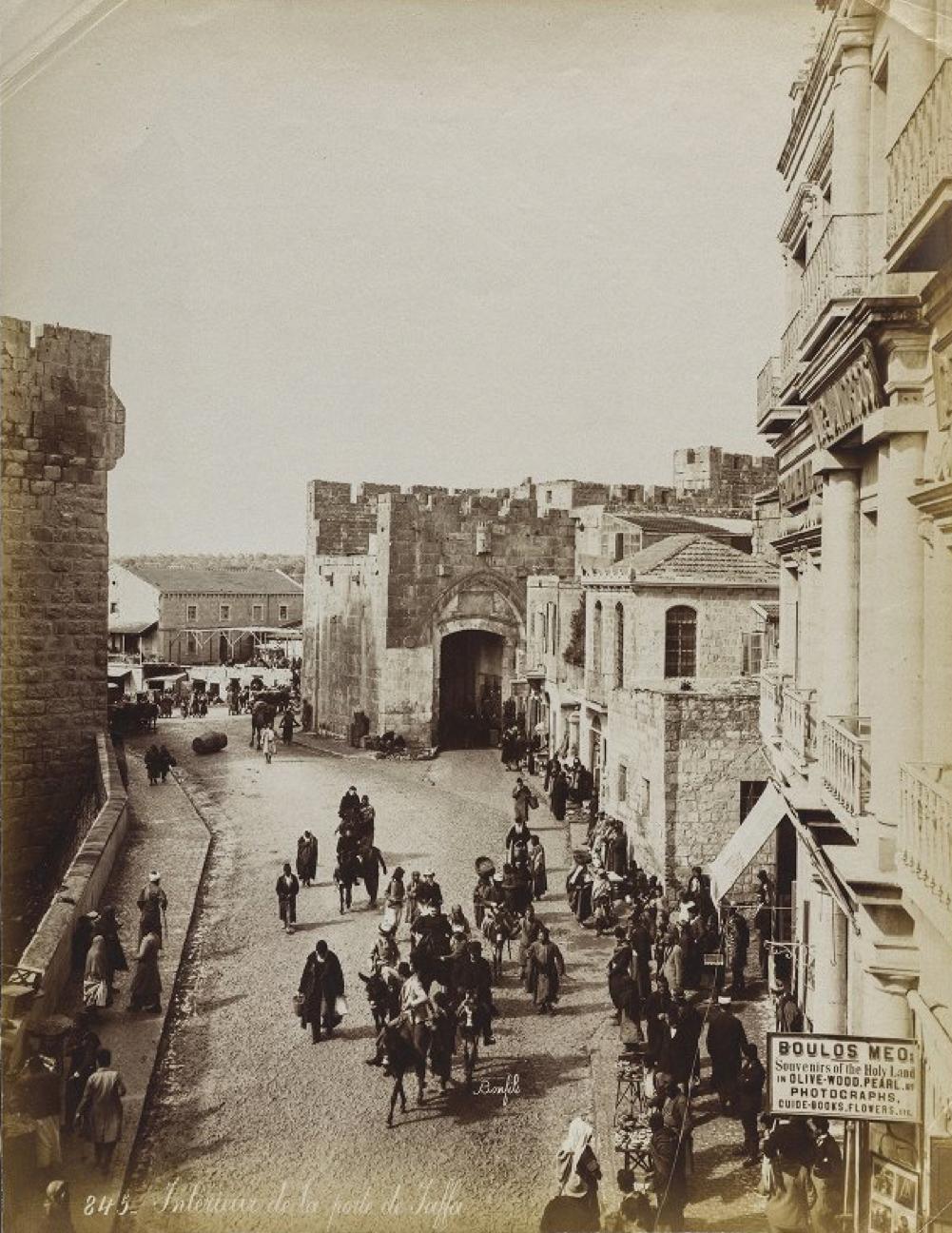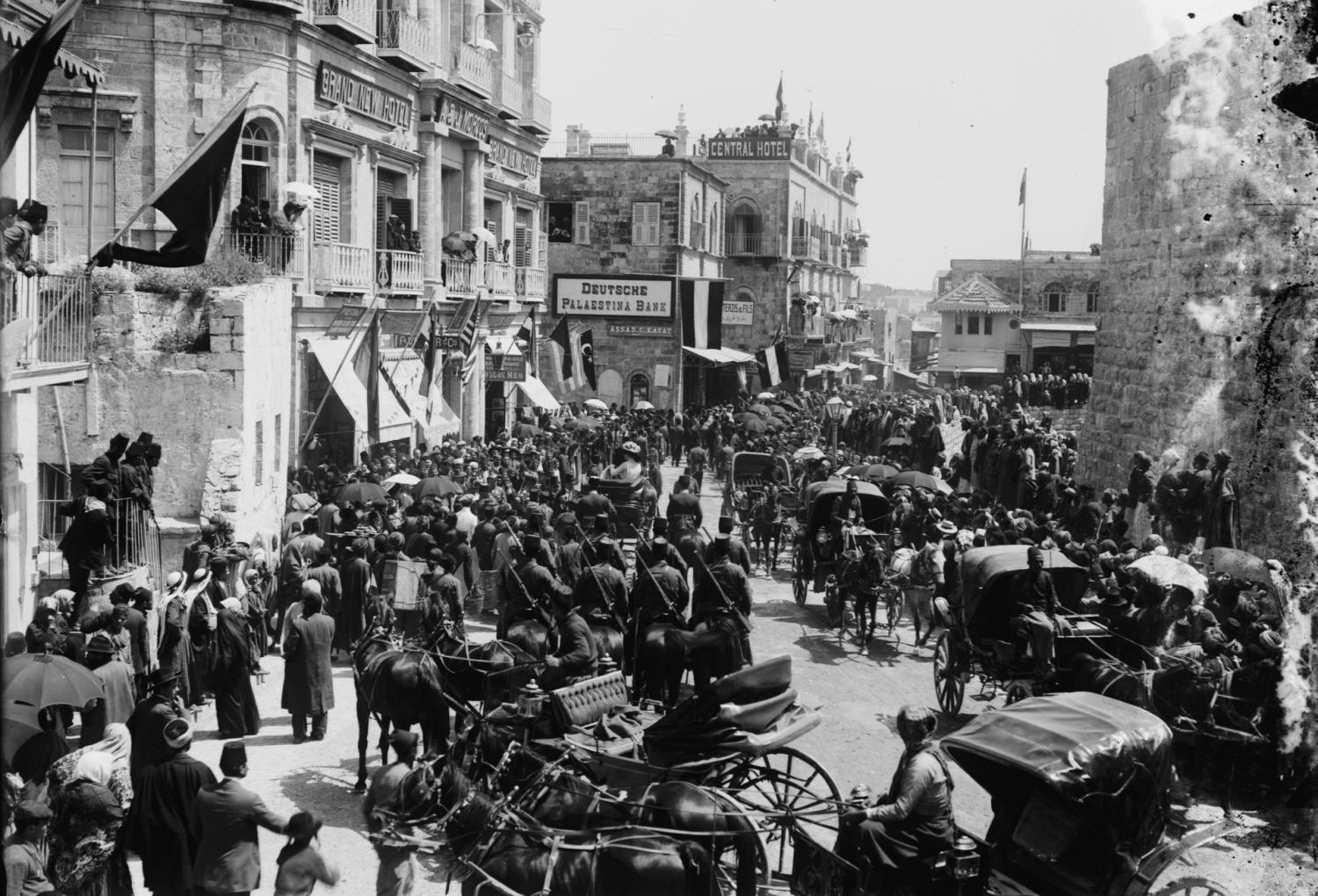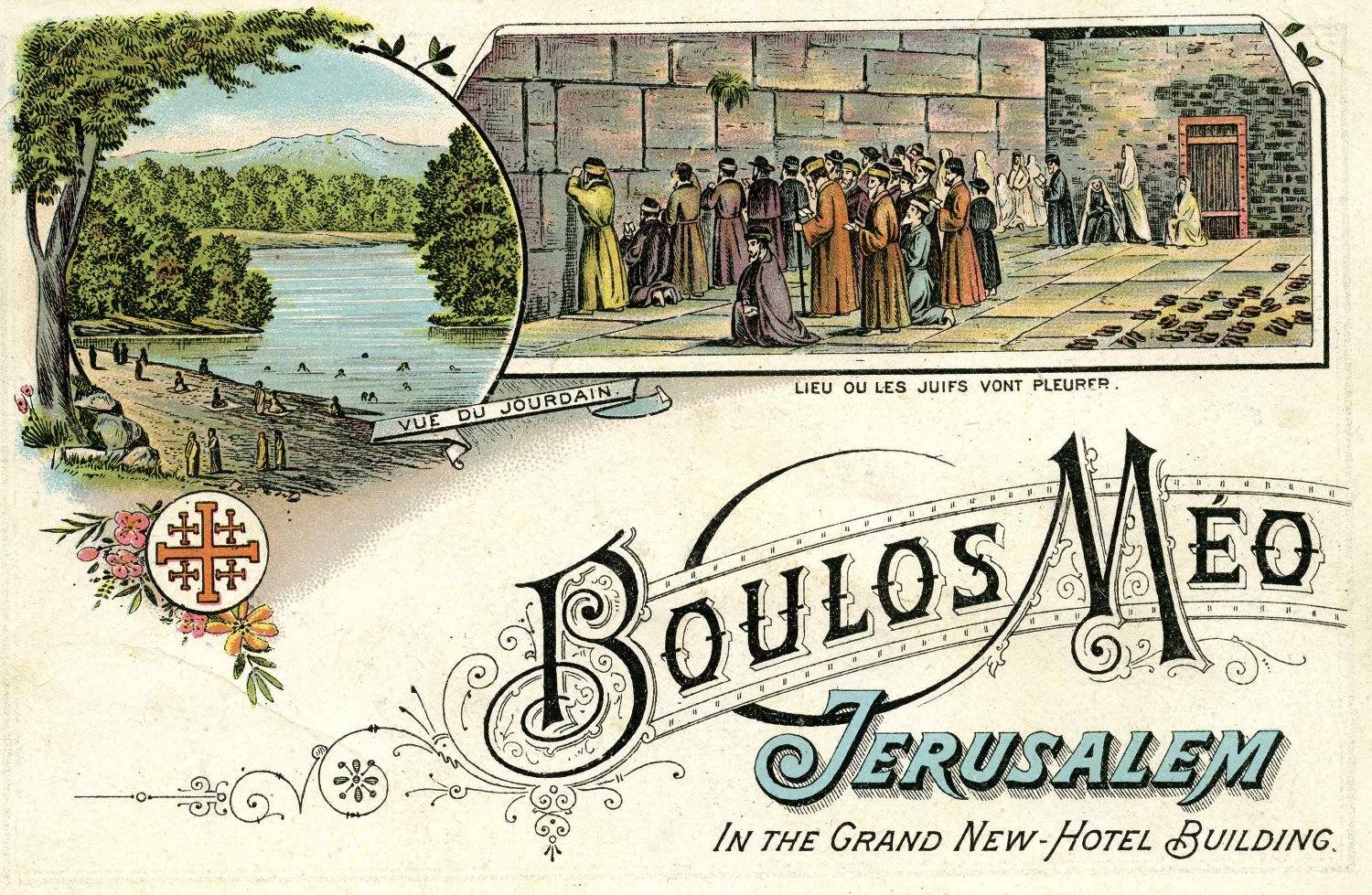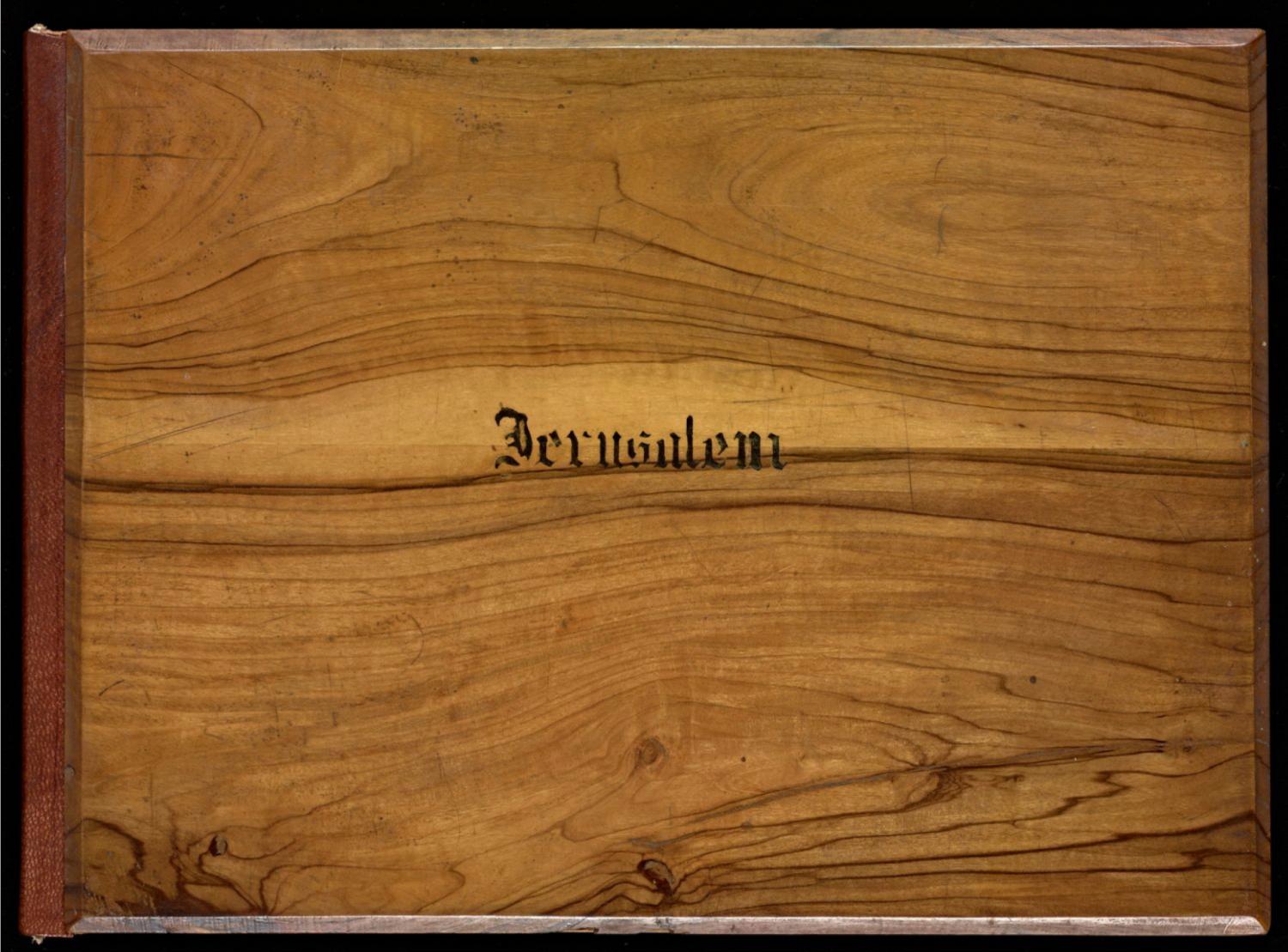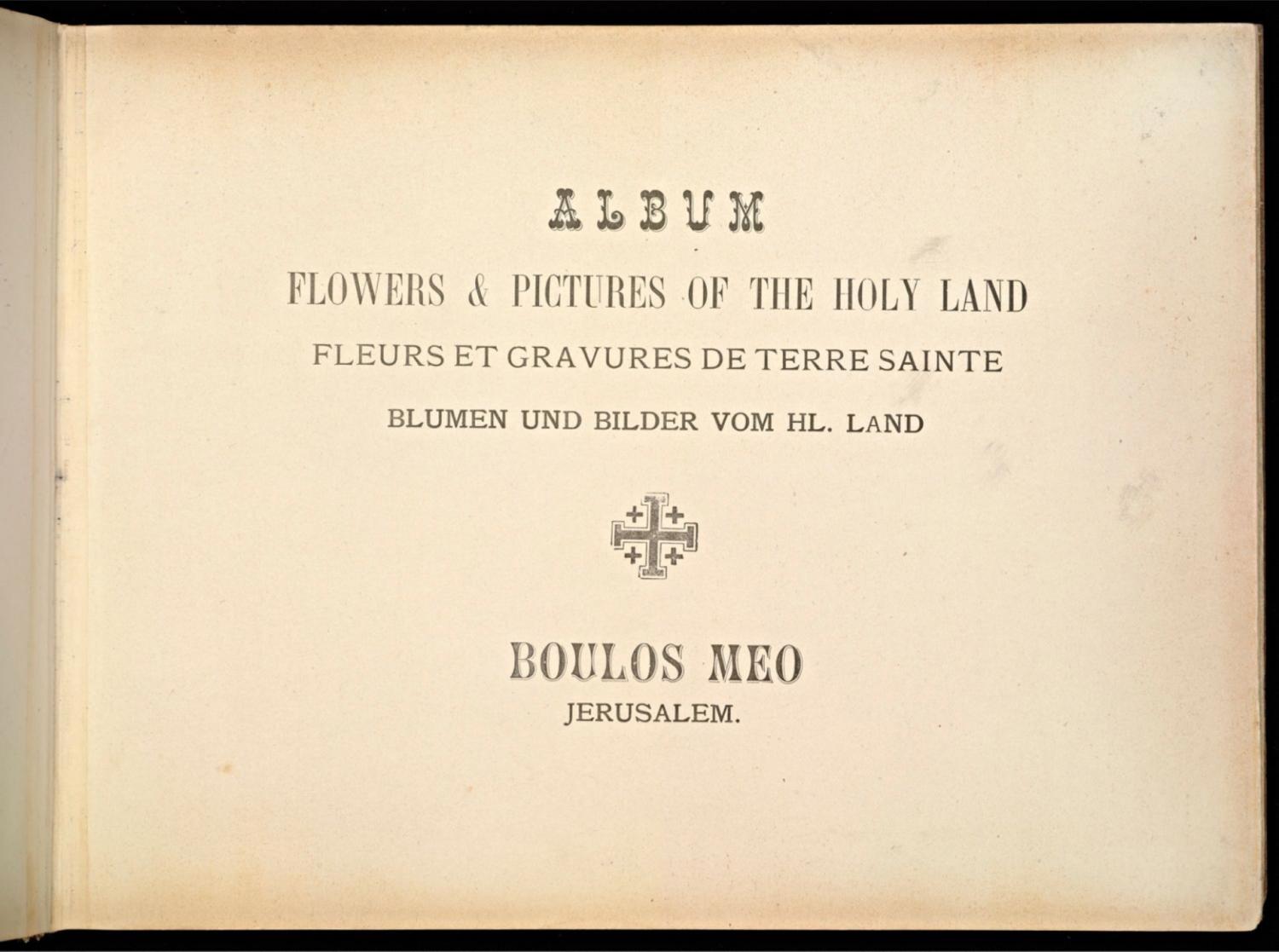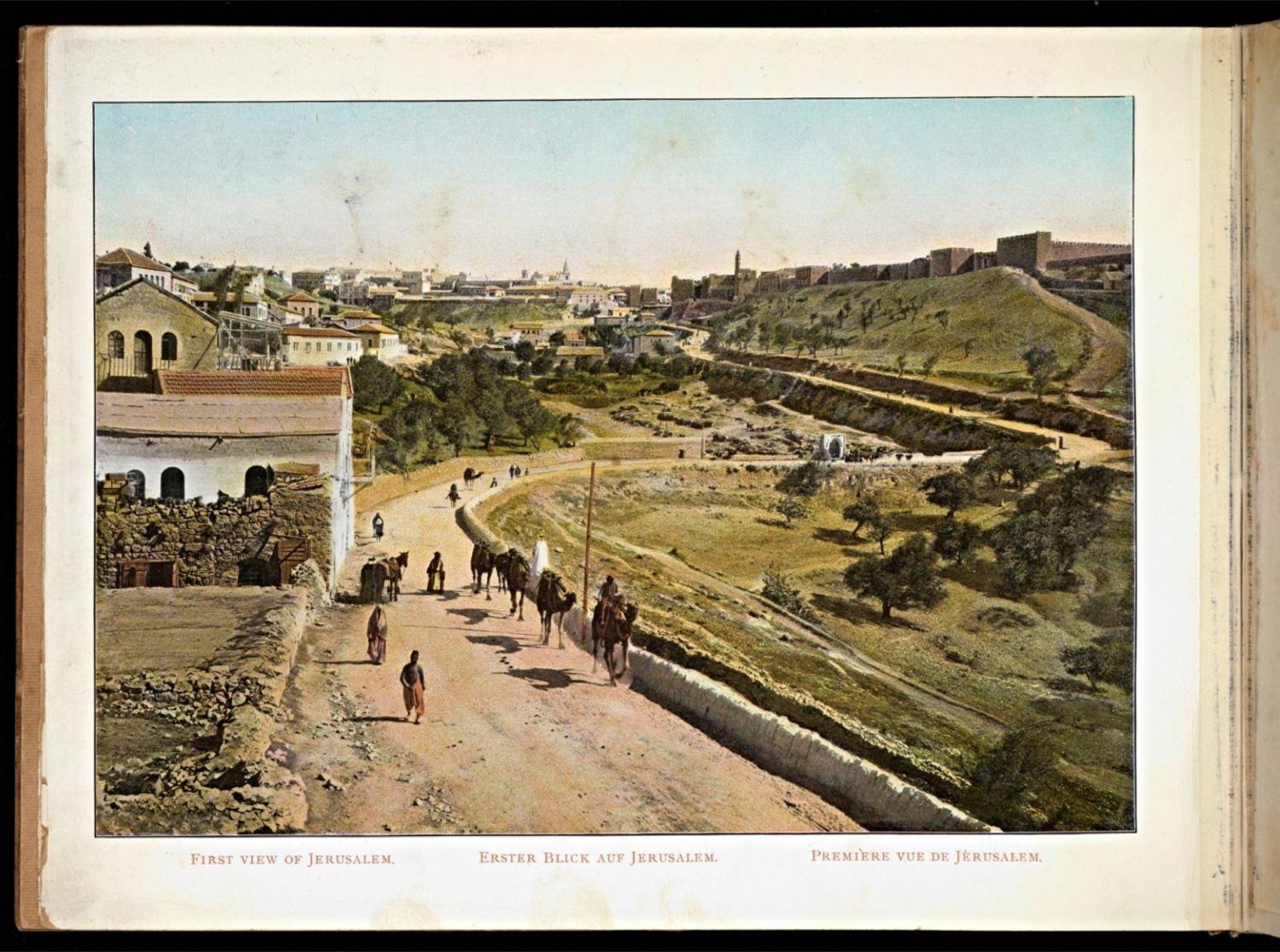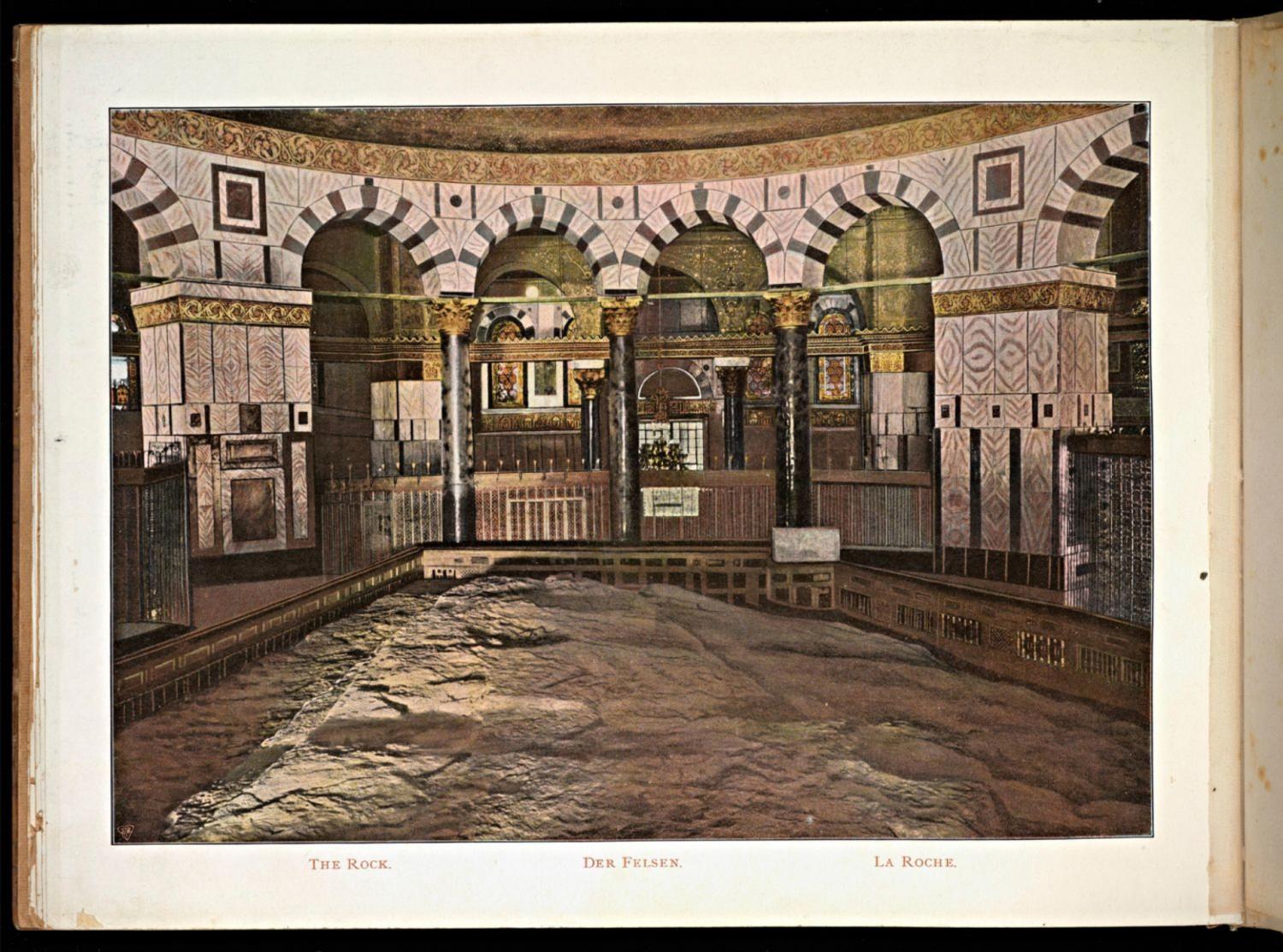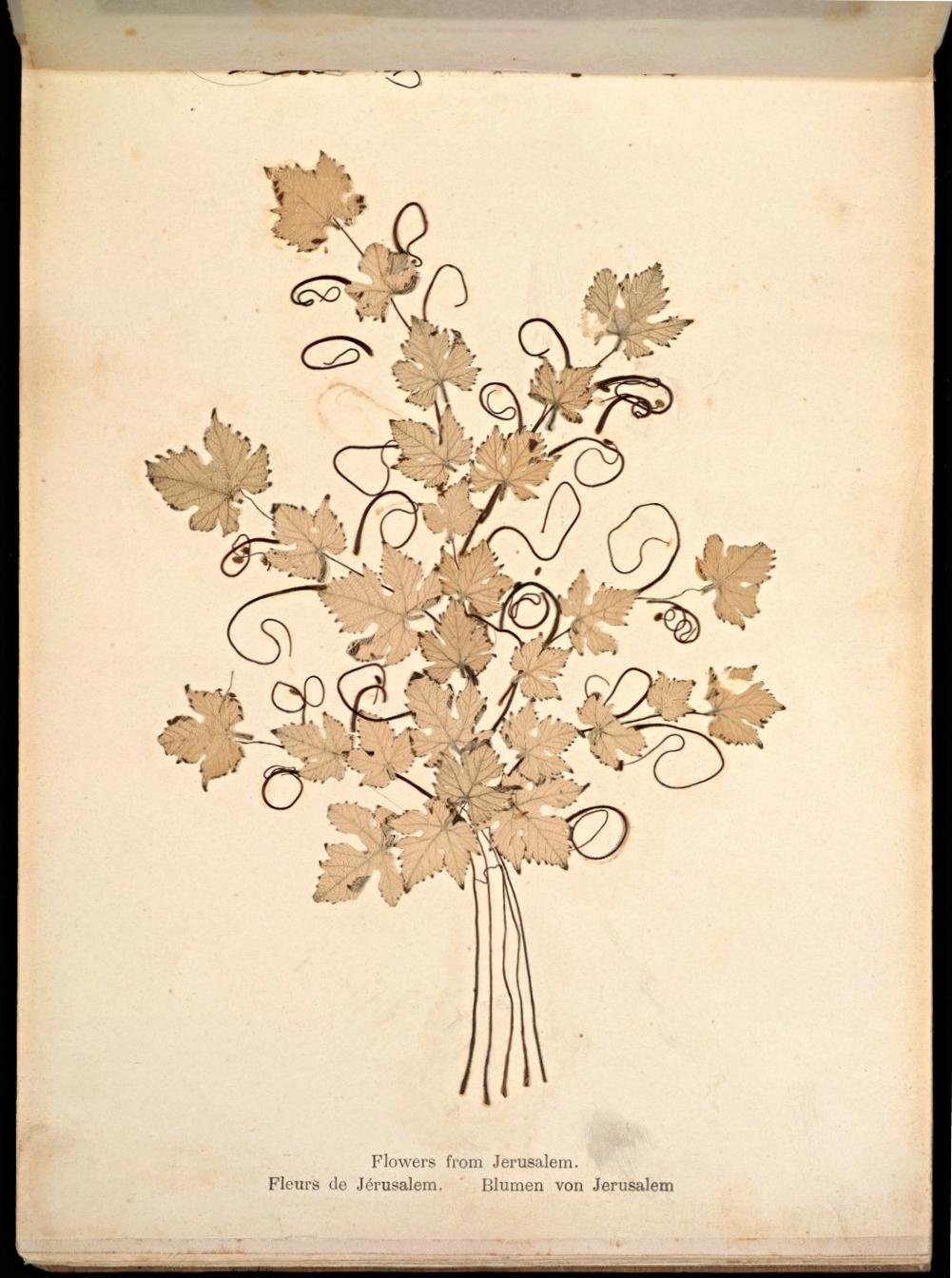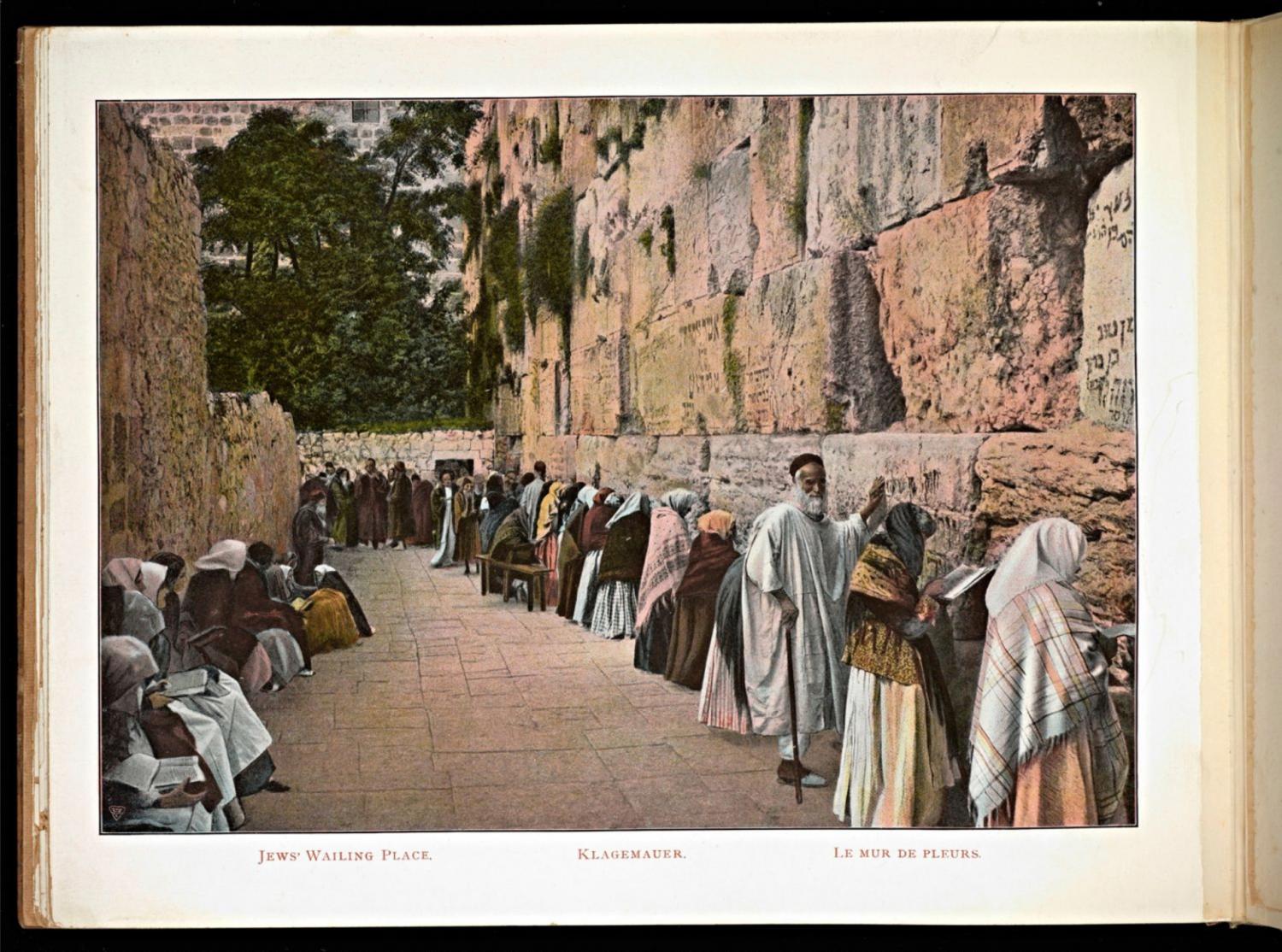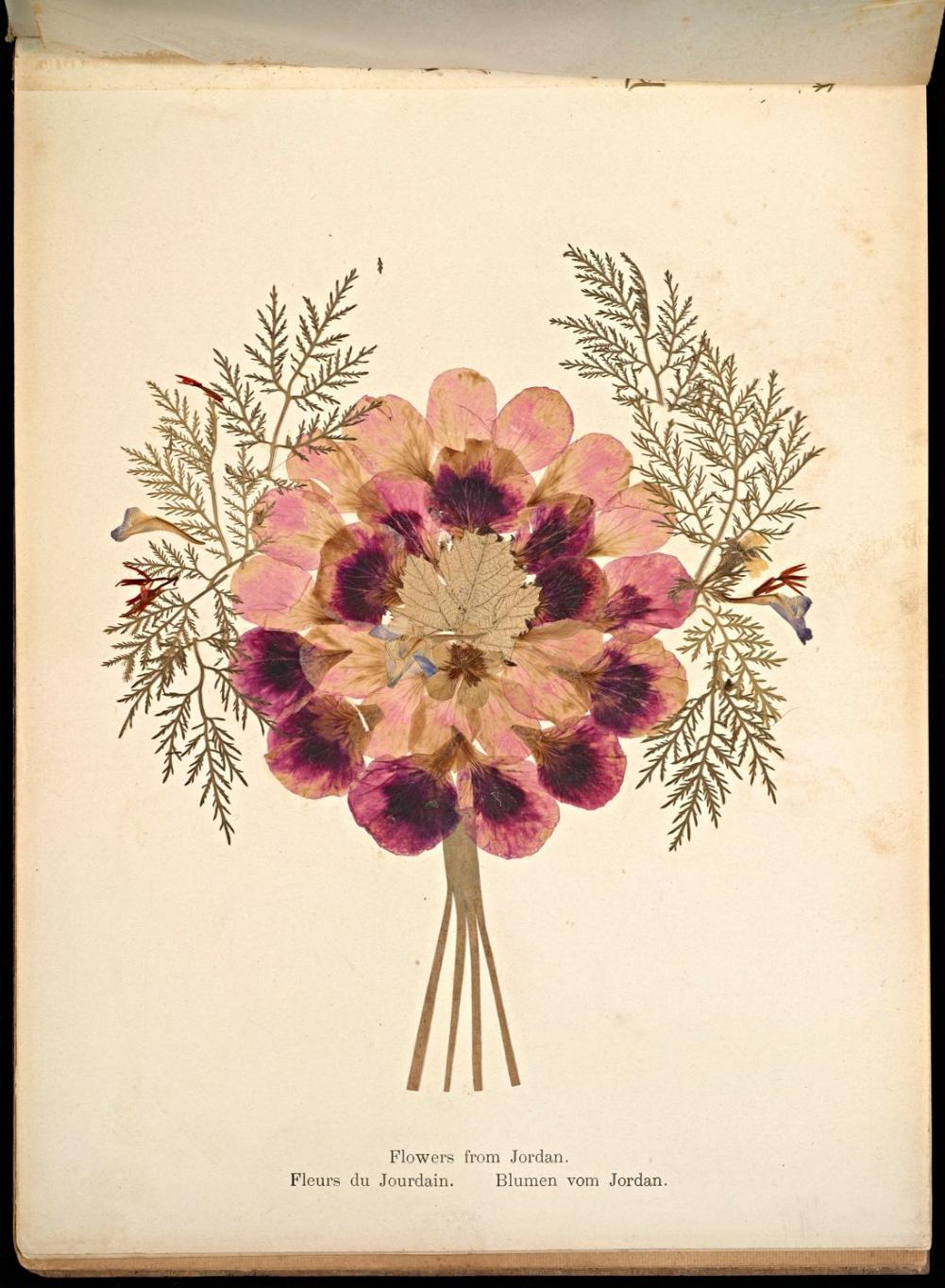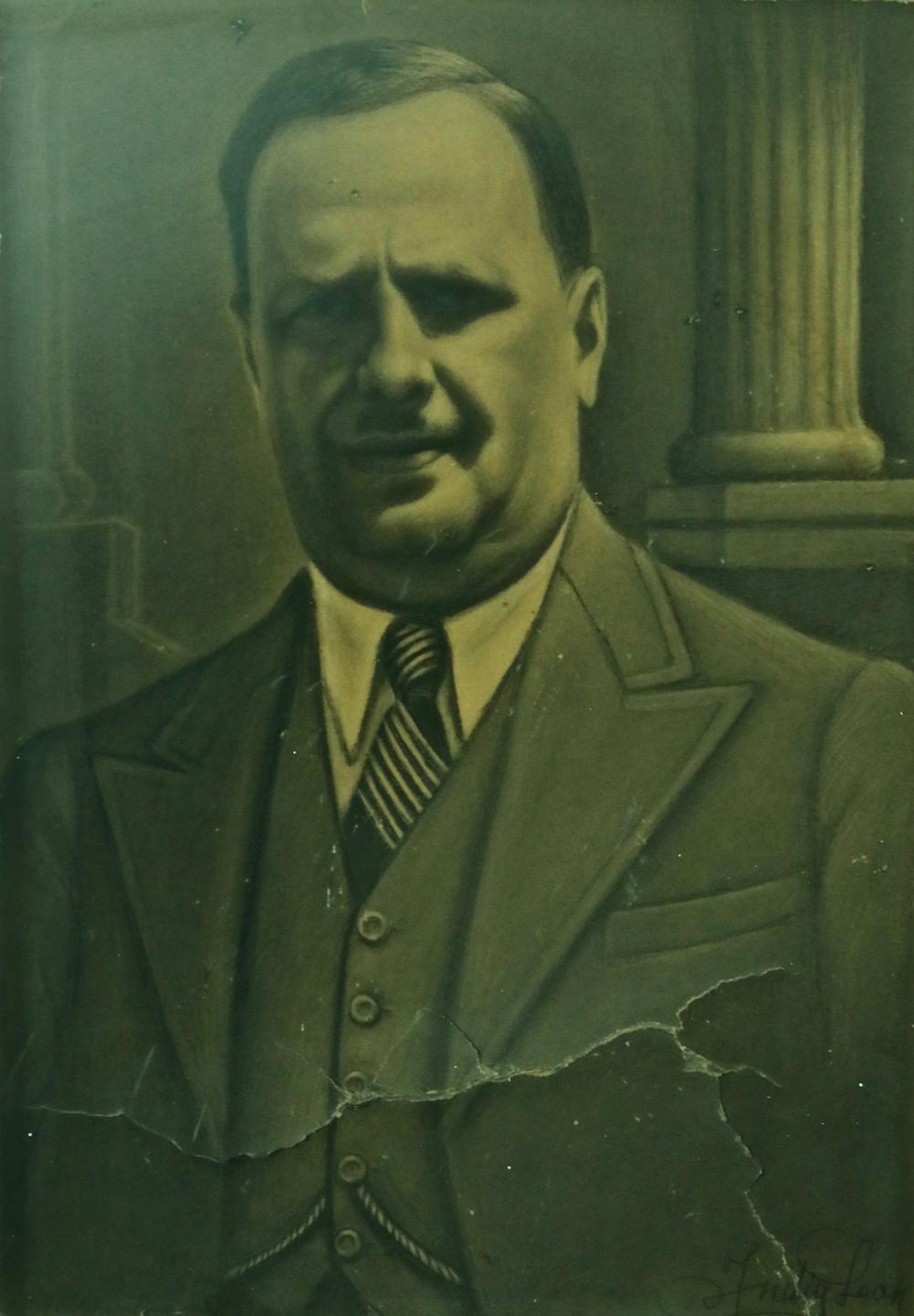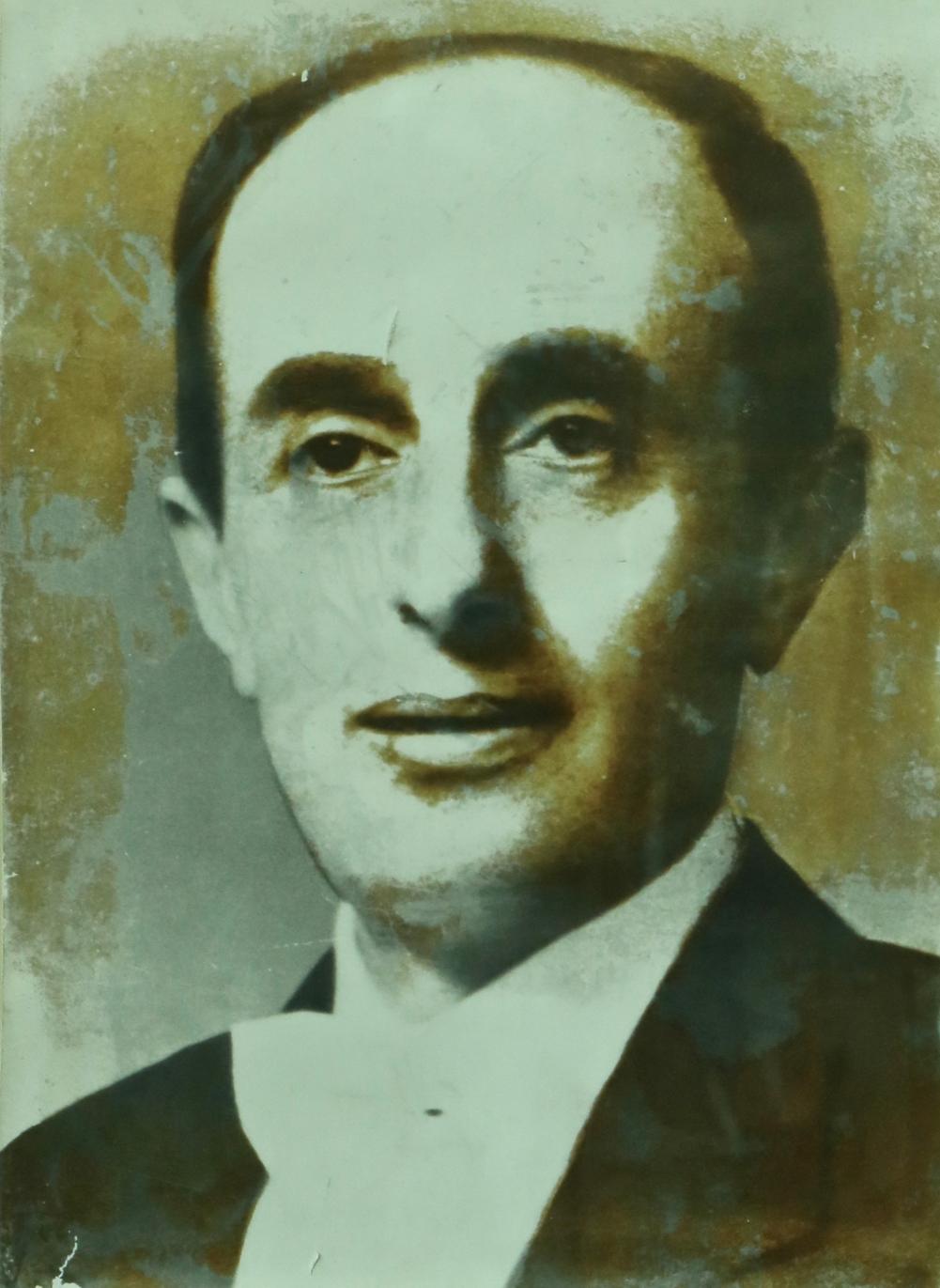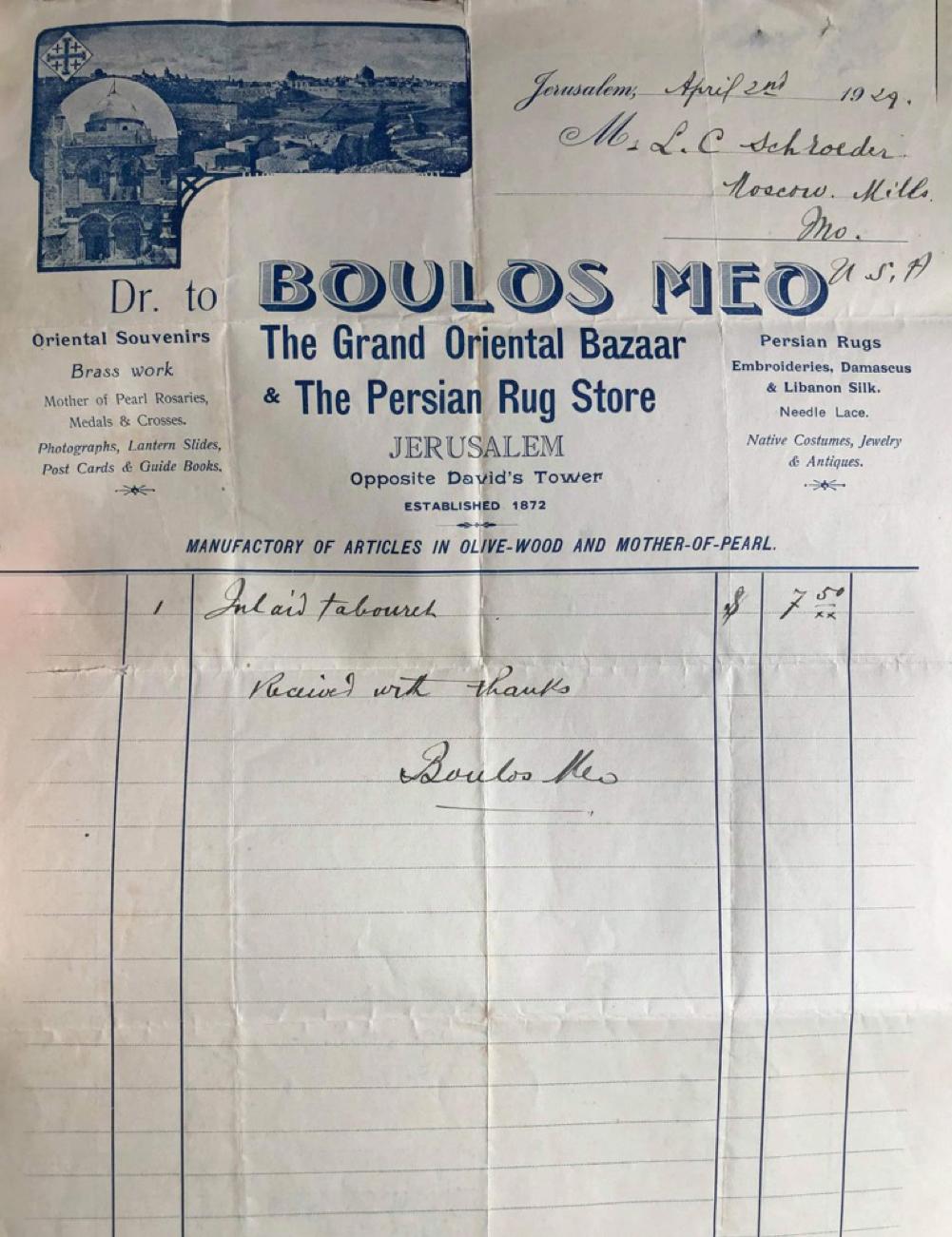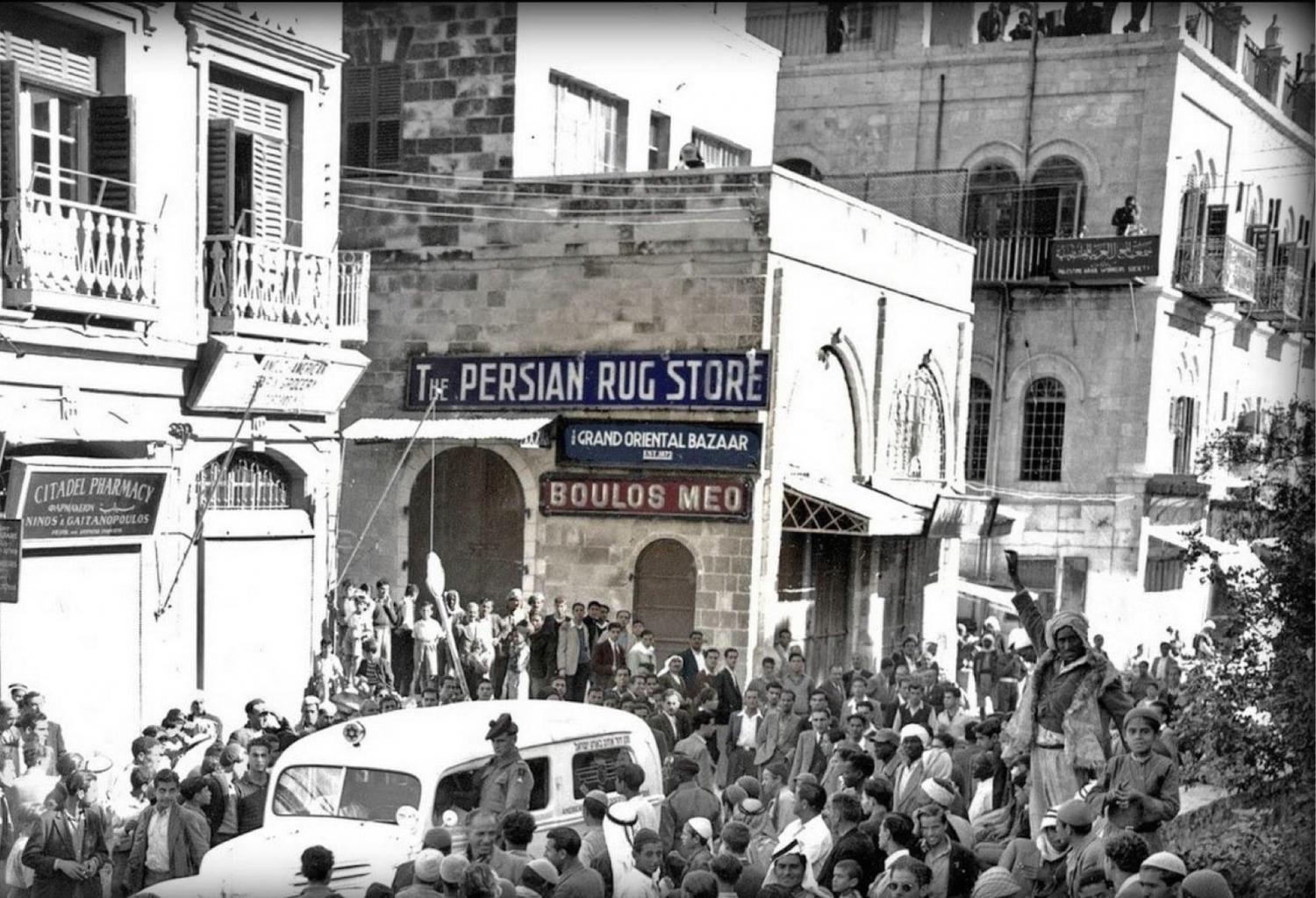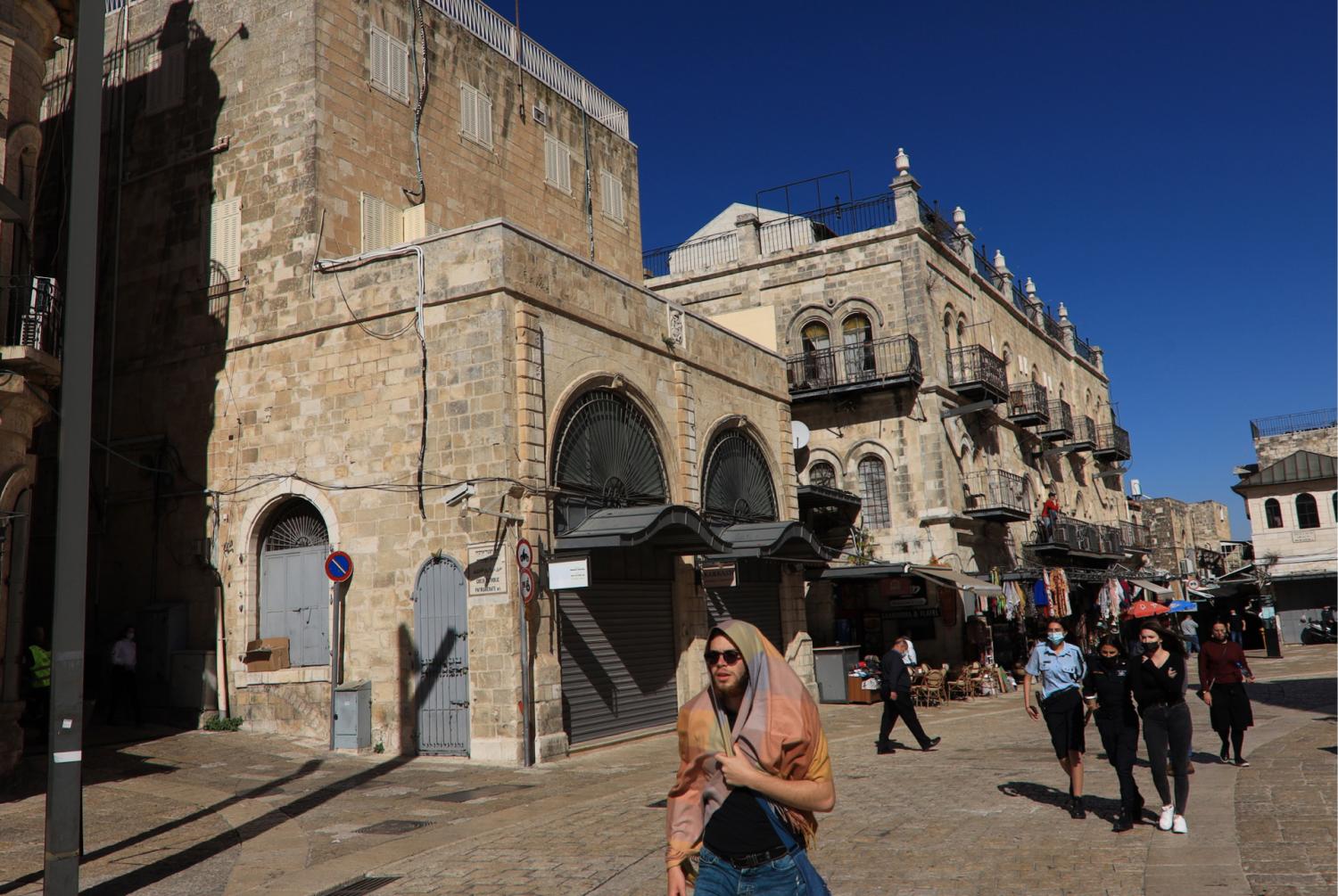This photo album explores a well-known and popular shop near Jaffa Gate, which used to be the main entrance point into the Old City. It also traces the history of a Jerusalemite merchant family dynasty, their community, and their city. The landmark shop was established in 1872 by the Meo family, which ran it for more than four generations until they reluctantly sold it in 1991 when the younger generation, disillusioned by a worsening situation for the community and shrinking opportunities, peeled off to pursue interests elsewhere, both inside and outside the country.
The shop started as a souvenir shop, the Boulos Meo Shop. It was later named the Persian Rug Shop / Grand Oriental Bazaar. The renowned antiquarian shop catered to tourists and pilgrims, who arrived in Palestine in increasing numbers in the second half of the 19th century, and was the source of the family fortune. Initially, the shop sold olive wood and mother-of-pearl souvenirs and travel books. The shop also sold postcards of the Holy Land and beautiful handcrafted albums that were valued because they included flora and fauna indigenous to the landscape of the Holy Land: painted rocks, pressed flowers, vials of holy water, and more. Indeed, some of the earliest postcards of Palestine were created by the Boulos Meo store. They offered visitors a way to share the experience of visiting Palestine with others back home. [1] Images in this photo album include examples of the shop’s meticulously handmade albums of the city and its religious sites designed for a pilgrim market.
In the early 1920s and 1930s, the wares expanded to include old Mexican silver and Persian rugs. Eventually the family began traveling all the way to Iran to buy the best carpets.
Because it was in East Jerusalem (unlike their considerable personal property, which was all in West Jerusalem and was therefore confiscated by the Custodian for Absentee Property after 1948 although the family never left the city), the shop stayed in the family’s possession and enabled it to survive the 1948 Nakba (Catastrophe) and the 1967 Naksa (Setback), at least financially.
In later years, under the management of Boulos’ great-grandson, Rami Meo (brother of Sani Meo), from 1976 to 1991, the store specialized in printed matter from the 16th to 19th centuries.
Through the store, a family of merchants established a business in the city that helped them climb the socioeconomic ladder and live a privileged and comfortable bourgeoisie life and weather the Nakba despite massive personal losses of property in West Jerusalem. Ultimately, however, the declining economic horizons for the Palestinian community in Jerusalem directly or indirectly resulted in its closure, since the younger generation wanted to seek their fortunes elsewhere. Sani Meo, Boulos’ great-grandson and the final shop owner, sold the shop in 1991 after his brother, Rami, who had run the store since 1976, moved to Australia on a lark in 1991, never intending to leave permanently. (Sani’s publishing business is in Ramallah.) Israel revoked Rami’s residency, and today he can only return to Jerusalem as a tourist. [2]
Notes
[1] Sary Zananiri, “Tourism and Souvenirs in Nineteenth Century Palestine,” This Week in Palestine.
[2] Jennine Abdul Khalik, “An Old City Shop and the Stones of Jerusalem: An Interview with Rami Meo,” Sajjeling, March 24, 2014.

